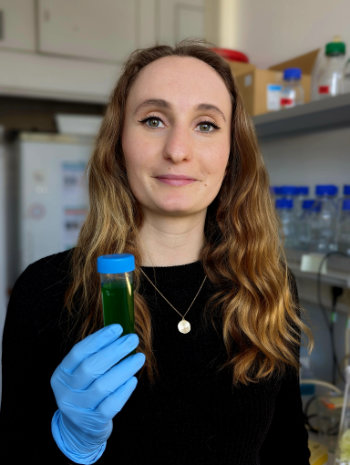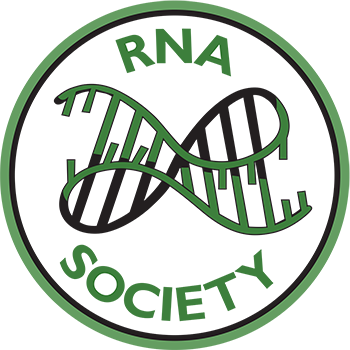Elise KerckhofsWritten by: Kathrin Halter Posted: April 14, 2025  Elise Kerckhofs is a PhD candidate in the group of Prof. Daniel Schubert at the Freie Universität Berlin, Germany. She is fascinated by a 2μm unicellular red alga, an example of an extremophile that is capable of surviving in extremely hot environments. She uses this unusual alga as a model to identify new regulators of heat stress in the context of global warming. Since her early studies, Elise Kerckhofs has been fascinated by the biochemical pathways that regulate how plants interact with their environment. She conducted her Bachelor and Master theses in the lab of Prof. Juergen Zeier at the Heinrich-Heine-Universität (HHU) in Düsseldorf, Germany. The Zeier lab focuses on systemic acquired resistance in plants, a form of memory to pathogens or environmental stresses that allows plants exposed to a stress to become resistant to subsequent stressful events. During this process, a localised stress, which can be induced by priming agents that mimic a stressor, triggers an innate immune response in other parts of the plant that were not exposed to the agent. For her Bachelor’s thesis Elise analyzed whether one such priming agent, beta-aminobutyric acid, could induce full systemic protection to pathogens. “I was so fascinated by how plants communicate stress from one leaf to the next and then induce mechanisms that render the uninfected tissue more resistant to future challenges, that I decided to [continue studying] plant stress signaling and priming”, Elise recalls. For her master thesis, Elise decided took a big step forward by defining her own research project. She established a collaboration with the lab of Prof. Gary Loake at the University of Edinburgh, where she spent 3 months. In Scotland, she focused on investigating if the stress reaction activated by the immune regulator N-hydroxypipecolic was mediated by the signaling molecule nitric oxide. Elise was so profoundly fascinated by the processes behind stress priming in plants, that she joined Prof. Daniel Schubert lab at Freie Universität Berlin for her PhD to study stress acclimation in phototrophs. In the Schubert lab, she is using the unicellular red alga Cyanidioschyzon merolae as a simplified model phototroph to identify new regulators of heat stress and heat stress memory. This unconventional model offers clear advantages. “While higher plants normally have multiple genes that encode proteins with redundant function, C. merolae usually only has one or two homologues. This makes it a lot easier and much faster to study their functions by gene knock-out via homologous recombination”, Elise explains. Applying this approach, Elise identified a protein that plays a role specifically in heat stress memory, as its gene knock out impairs acquired but not basal thermotolerance in C. merolae. The protein is involved in RNA metabolism and regulation, and its specific function in heat stress memory is not well understood either in higher plants or other organisms. Therefore, Elise shares her excitement about pioneering studies on the role of alternative splicing in HS memory. “What makes this finding specifically interesting is that the novel heat stress protein is known to function in splicing in other organisms, but C. merolae only has a total of 39 introns (Arabidopsis has ~127,000) and loss of this protein did not cause major changes in splicing efficiency under normal temperatures. I believe that continuing further with this project will help us to better understand how phototrophic organisms establish stress memory, teach us about the function of C. merolae’s splicing machinery, and [possibly] even reveal novel functions of the identified protein” she highlights. Elise is convinced that her basic science research has practical applications that could address current global challenges and enhance our quality of life. “In times of global warming, I strongly believe that conducting research on how algae and plants (which make up our major food source) can cope with high temperature stress is fundamental to prepare for future challenges.”
Throughout her scientific path, the people who have inspired her the most are those with whom she has worked closely, including her current supervisors Prof. Daniel Schubert and Prof. Mitja Remus-Emsermann, “who endlessly supply me with new ideas and options, and thereby constantly remind me that science has no limits.” Elise also mentions Dr. Martha Stark, who works in the lab of Prof. Stephen Rader, one of the most passionate and intelligent people she has ever met. “She always finds solutions for problems, knows which protocol to try and how to optimize it and make it work.” Dr. Stark has become one of Elise’s key female role models in both her personal and scientific development. Elise has always received support from students, postdocs, and professors both from within her group and outside it to overcome the greatest challenge she has encountered: teaching students in the lab and supervising theses. She admits that it is “difficult to adjust to each student’s individual needs and speeds, as I was never trained in that during my scientific education.” In this regard she suggests that it would be very helpful for PhD students to receive academic mentoring training during their studies. “This is something that everyone who stays in academia will have to do sooner or later and the quality of our teaching ultimately effects the quality of the skillset of the next generation of scientists.” Elise is still at a very early stage in her career. Nevertheless, she has already experienced moments where she had to make decisions about her future. The biggest one was moving to Berlin to start her PhD. Studies. Elise recalls “This was inspired by two things: first, my stay in Edinburgh had taught me that the science world is accessible and open. Experiencing a different lab in a different country gave me the impression that scientists and labs are more or less the same everywhere and we all have a common interest and goal. That science is full of passionate, intelligent and open-minded people apparently extended past the walls of my lab at the HHU and I knew I wanted to be a part of it and see more. Second, in a seminar with Prof. Petra Bauer, which specifically focused on women in plant science, I had come across Dr. Caroline Dean, who very inspiringly and enthusiastically encourages young women to fearlessly follow the path of science and who explains that motherhood and science are not mutually exclusive”. Besides her time in Scotland, Elise also had the opportunity to spend a month in the lab of Prof. Stephen Rader at the University of Northern British Columbia in Canada. These experiences were so inspiring in learning how other people work that she strongly advises students to apply for funding and visit different labs as part of their personal and scientific development. She did it twice, and both worked out, supporting her stays abroad. She insists: “I encourage every young scientist to look for additional funding options [to visit different labs around the world] and to not be too shy to apply.” Elise is a strong enthusiast of RNA biology. As her work involves studying the effect of stress on organisms, she uses RNA levels as a read-out of stress signals. “A lot of regulation occurs at the [mRNA level] and exploring regulatory pathways has always been interesting to me because identifying causality can cause some sort of satisfaction to the brain”. Her favorite RNA journal article is: “Spliceosome assembly and regulation: insights from analysis of highly reduced spliceosomes”, where the authors compared the 71 splicing proteins in 40 different taxa, including C. merolae, to understand the evolution of the spliceosome. Elise is convinced that “RNA never gets boring as it always comes up with surprising new features, forms and functions”. Her favorite RNA is mRNA, as it offers a “fascinating read out of the state of a cell or organism.” Elise will be completing her PhD studies in the Summer and is still planning her next steps. If you are delighted by her personality or feel fascinated by her work, feel free to send her an email and reach out to her! |
